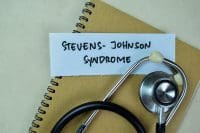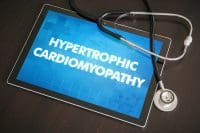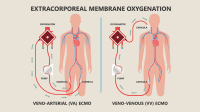Differential diagnosis provides a key to successful outcomes.
- Significant emotional or physical events (both positive and negative) can trigger Takotsubo syndrome.
- Symptoms of an ST-elevation myocardial infarction and acute heart failure can mimic Takotsubo syndrome.
- Nurses should have a high suspicion of Takotsubo syndrome in patients with symptoms of acute cardiac syndrome or acute heart failure who recently experienced a significant emotional or physical event.
Dr. Hikaru Sato first described takotsubo cardiomyopathy or takotsubo syndrome (TTS)—also called broken heart syndrome, stress-induced cardiomyopathy, and apical ballooning syndrome—in Japan in 1990. TTS occurs in 1% to 2% of patients with acute coronary syndrome symptoms; of those cases, 89.9% are women. The term “takotsubo” comes from the Japanese name for an octopus trap, which has a shape similar to the dilated ballooning of the left ventricle in patients with TTS. Diagnosis of the syndrome steadily increased between 2006 and 2014. According to a Cleveland Clinic study, the incidence of TTS throughout the COVID-19 outbreak has grown from less than 2% to 7.8%.
Understanding the pathophysiology, clinical manifestations, diagnosis, treatment, and prognosis of TTS can help nurses care for and support patients.
Spontaneous coronary artery dissection
Takotsubo cardiomyopathy: Healing a broken heart
Pathophysiology
TTS, an acute and predominantly reversible syndrome, causes a transient left ventricular systolic dysfunction. It’s primarily triggered by a stressful, emotional, or physical event and mimics acute coronary syndrome (ACS). Dilation of the left ventricle typically occurs at the apex, which produces the classic appearance of the octopus trap. Ballooning of the left ventricle leads to transient ST-segment elevation on ECG, increased troponin and B-type natriuretic peptide levels, and reduced ejection fraction.
Although the exact pathophysiology remains unknown, several mechanisms have been proposed. Because stressful events appear to trigger TTS, some researchers have suggested an excess release of catecholamines as a mechanism. The increased serum levels of catecholamine may promote vasospasm of the epicardial vessels and the cardiac microvasculature. However, this theory presents limitations because a mere spike in catecholamines wouldn’t lead to TTS. Another theory involves the role of estrogen. This theory presents some plausibility because nearly 90% of patients with TTS are postmenopausal women. Although many theories exist, more research is needed to determine its exact pathophysiology.
Clinical manifestations and triggers
Patients with TTS experience symptoms similar to those of acute myocardial infarction (MI) or acute heart failure. The most common symptoms include chest pain, dyspnea, dizziness, generalized weakness, and occasionally syncope. Physical examination of a patient with TTS may reveal crackles, tachycardia, hypotension, narrow pulse pressure, S3 gallop, and jugular vein distention. These assessment findings also occur with acute MI and heart failure. The ECG may show changes such as ST-segment elevation and/or a T-wave inversion in the precordial leads. TTS and acute MI have overlapping symptoms, ECG changes, and laboratory results. This makes distinguishing one from the other difficult.
A stressful event (happy or sad) trigger can be primary (emotional) or secondary (physical). Examples of primary triggers include the loss of a spouse, retirement, birth of a grandchild, loss of a job, new job, bankruptcy, or a natural disaster. Potential secondary triggers include surgery, trauma, severe pain, stroke, cancer, or childbirth. These triggers are neither specific nor all-inclusive.
Diagnosis
The chief goal of diagnosis is to differentiate TTS (by way of exclusion) from its main differential diagnoses—acute coronary syndrome, acute heart failure, myocarditis, and pheochromocytoma.
The Mayo Clinic offers the most widely known diagnostic criteria for TTS, including the use of ECG, cardiac biomarkers (troponin or creatinine kinase), and coronary catheterization to rule out occlusion. Echocardiograms and cardiac magnetic resonance imaging (MRI) also are used. TTS can’t be reliably differentiated from ACS and acute heart failure through noninvasive testing alone.
Many patients with TTS display elevated B-natriuretic peptide levels, which complicates distinguishing it from acute heart failure. Transthoracic echocardiogram and MRI help to evaluate the function of the left ventricle when acute heart failure is a differential diagnosis, but invasive testing is clinically required. Cardiac catheterization is the best single tool for diagnosing TTS in the presence of ST elevation. If a patient has TTS, their angiogram will show either normal coronary vasculature or mild-to-moderate stenosis rather than obstruction.
The 2011 establishment of the International Takotsubo Registry further differentiates between TTS and other diagnoses in clinical settings. This tool helps clinicians anticipate a diagnosis of TTS vs. other possibilities. It consists of seven variables—five assess medical history, and two assess the patient’s ECG. (See Diagnostic criteria.)
Diagnostic criteria
The revised Mayo Clinic criteria and the international takotsubo diagnostic criteria aid diagnosis of the condition.
Revised Mayo Clinic criteria
- Transient dyskinesis of the left ventricular midsegments, with or without apical involvement; regional wall-motion abnormalities extend beyond a single epicardial distribution, and a stressful trigger is often, but not always, present.
- Absence of obstructive coronary disease or absence of angiographic evidence of acute plaque rupture.
- New ECG abnormalities (either ST-segment elevation and/or T-wave inversion) or modest elevation in the cardiac troponin level.
- Absence of pheochromocytoma and myocarditis.
International takotsubo diagnostic criteria
- Patients show transient left ventricular dysfunction (hypokinesia, akinesia, or dyskinesia) presenting as apical ballooning or midventricular, basal, or focal wall motion abnormalities. Right ventricular involvement can be present. In addition to these regional wall motion patterns, transitions between all types can exist. The regional wall motion abnormality usually extends beyond a single epicardial vascular distribution; however, rare cases can exist in which the regional wall-motion abnormality occurs in the subtended myocardial territory of a single coronary artery.
- An emotional, physical, or combined trigger can precede the takotsubo syndrome (TTS) event but isn’t required.
- The patient has a neurologic condition, such as subarachnoid hemorrhage, stroke/transient ischemic attack, or seizures.
- Although ECG abnormalities typically occur (ST-segment elevation or depression, T-wave inversion, and QTc), in rare cases, the patient may have no ECG changes.
- In most cases, cardiac biomarker (troponin T or I and CK-MB) levels are moderately elevated; significant elevation of brain natriuretic peptide is common.
- Significant coronary artery disease doesn’t exclude TTS.
- Patients have no evidence of infectious myocarditis.
- TTS predominantly affects postmenopausal women.
Source: Boyd 2020
Treatment and prognosis
TTS requires inpatient cardiology care. Initially, treatment focuses on acute coronary syndrome guidelines and supportive care. Once TTS is diagnosed, supportive care continues based solely on the symptoms of heart failure. The patient’s hemodynamic stability (determined by signs of acute heart failure, pulmonary edema, hypotension, or cardiogenic shock) drive acute care management.
Treatment depends on severity. Patients with symptoms of pulmonary edema should be placed in a semi-upright or high Fowler’s position and provided with oxygen and diuretics to manage shortness of breath. More severe cases may require mechanical left ventricular support, such as a left ventricular assist device. In the presence of cardiogenic shock, the provider may order an intra-aortic balloon pump.
Clinicians should focus treatment on preventing major cerebrovascular events, including stroke and myocardial infarction, which occur in 7.1% of patients diagnosed with TTS in the first 30 days of hospital admission. For this reason, patients with large areas of cardiac hypokinesis should receive anticoagulation. The most common complication of TTS is the onset of chronic heart failure, with or without pulmonary edema.
After discharge, patients require frequent follow-up with a cardiologist. Long-term care to assess recovery of their left ventricular function includes lab work and echocardiography.
Overall, patients with TTS have a good prognosis; most will see a recovery of their left ventricular function within several weeks. The possibility of reoccurrence is about 10%, but more likely in patients with additional risk factors. Due to the increased burden of comorbidities in men, they’re three times as likely as women to die or have permanent adverse effects as a result of TTS. Studies into the use of angiotensin-converting enzyme inhibitors, angiotensin receptor blockers, and beta-blockers to reduce TTS recurrence have had mixed results.
Nursing implications
Given that the incidence of TTS has increased to 7.8%, nurses should be aware of the condition as a differential diagnosis, especially in postmenopausal women who report difficulty breathing and chest pain after a physically or emotionally stressful event. Postmenopausal women frequently have no cardiac risk factors for TTS. Nurses may be the first point of contact for patients seeking care in the acute setting, so they play a critical role in gathering clinical information, which may lead to a differential diagnosis of TTS, myocardial infarction, congestive heart failure, or myocarditis.
Initial nursing care of a patient with TTS may include cardiac and hemodynamic monitoring, laboratory testing, and assessing for signs or symptoms of heart failure or shock. Nurses can educate patients about healthy coping strategies for managing stress to prevent a reoccurrence of TTS. A diagnosis of TTS may be intimidating. Nurses can reassure patients by educating them about the treatment and reversibility of the diagnosis.
Expand your knowledge
Clinicians should include TTS in their differential diagnoses for any patient with acute coronary syndrome who has chest pain and difficulty breathing after a stressful event. More research will help target the exact pathophysiology of TTS as well as treatment options. By expanding our knowledge, we’ll improve patient care.
Sarah E Marincic is a nursing professional development specialist at Cleveland Clinic in Cleveland, Ohio.
American Nurse Journal. 2024; 19(4). Doi: 10.51256/ANJ042412
References
Ahmad SA, Brito D, Khalid N, Ibrahim MA. Takotsubo cardiomyopathy. StatPearls. January 9, 2023. ncbi.nlm.nih.gov/books/NBK430798
Ali M, Rigopoulos AG, Ali K, et al. Advancements in the diagnostic workup, prognostic evaluation, and treatment of takotsubo syndrome. Heart Fail Rev. 2020;25(5):757-71. doi:10.1007/s10741-019-09843-9
Boyd B, Solh T. Takotsubo cardiomyopathy: Review of broken heart syndrome. JAAPA. 2020;33(3):24-9. doi:10.1097/01.jaa.0000654368.35241.fc
Cantey C. Takotsubo syndrome: The great imposter. Nurse Pract. 2020;45(5):6-10. doi:10.1097/01.npr.0000660372.50859.63
Cedars-Sinai Staff. “Broken heart” syndrome spikes during COVID-19. March 9, 2021. cedars-sinai.org/discoveries/broken-heart-syndrome-spikes.html
El-Hussein MT, Kilfoil L. The story of a broken heart: Takotsubo cardiomyopathy. J Emerg Nurs. 2021;47(4):635-42. doi:10.1016/j.jen.2020.12.014
Lyon AR, Citro R, Schneider B, et al. Pathophysiology of takotsubo syndrome: JACC state-of-the-art review. J Am Coll Cardiol. 2021;77(7):902-21. doi:10.1016/j.jacc.2020.10.060
Medina de Chazal H, Del Buono MG, Keyser-Marcus L, et al. Stress cardiomyopathy diagnosis and treatment: JACC state-of-the-art review. J Am Coll Cardiol. 2018;72(16):1955-71. doi:10.1016/j.jacc.2018.07.072
Reeder G, Prasad A. Management and prognosis of stress (takotsubo) cardiomyopathy. UpToDate. October 4, 2023. uptodate.com/contents/management-and-prognosis-of-stress-takotsubo-cardiomyopathy
Key words: Takotsubo syndrome, broken heart syndrome, cardiomyopathy, acute coronary syndrome, heart failure


















